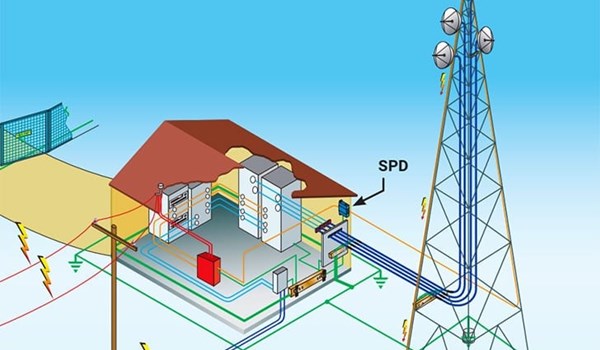
Earthing System And Lighting Protection
| Assessment ID : | ELE348 |
| Course Duration : | 5 Days |
| City : | Abu Dhabi |
| Location : | UAE |
INTRODUCTION
Earthing is an integral part of any electrical system. Properly selected earthing equipment will accomplish many desirable objectives, such as:
- Providing a source of earth fault current relaying.
- Allowing fault current to flow
- Preventing high impedance faults to happen
- Reducing personnel hazards.
- Improving the system operating characteristics.
Equipment earthing should be differentiated from system earthing since the functions of the two are often different and confused. A "system earth" is a connection to ground from one of the current carrying conductors of a distribution or wiring system. The return conductor for a line-to-neutral load on either single or multi-phase systems is an example of such a current carrying conductor. This system ground may be made at such locations as transformer or generator neutral points by either a solid connection or through a current limiting device.
The primary purpose of the system earthing is related to operational characteristics and is an important, if not an essential part of the power system. This 3 days course will
discuss the different types of earthing systems in depth.
TRAINING OBJECTIVES
- The basic principles & importance of earthing of electrical systems.
- The function of power system earthing and the various options available.
- Role of protective grounding in ensuring safety; sizing of grounding conductors.
- Importance of equipotential bonding in ensuring safety.
- Design of ground electrodes, measurement of soil resistivity and ground electrode resistance.
- Fundamental principles in the design of grounding systems in substations.
- Solving static electricity-related hazards by grounding and bonding.
- Role of grounding in surge protection of power distribution equipment and sensitive systems.
- How to test and maintain earth electrode & earthing grid.
- How to design Lighting Protection
OUTLINES
- Basics of grounding/earthing & Bonding.
- Objectives of equipotential bonding.
- Different types of functional & Protective earthing
- Electricity shock & hazards & Equipment earthing
- Static charges and the need for bonding.
- Different Types of System or Neutral Earthing.
- Effectively earthed system.
- Not effectively earthed system.
- Zigzag earthing transformer.
- Sizing of Earthing and Bonding conductors
- Comparison of Different system Earthing Principles
- Earthing & Earth fault protection.
- Different earhing of distribution system arrangements (TT, TN-C, TN-S & IT) as per BS 7671
- Lightning & surge arresters.
- Transient overvoltages.
- Calculations of fault loop impedance and prospective short circuit
- Touch & Step voltages.
- Solved examples
- Revision and Discussion

